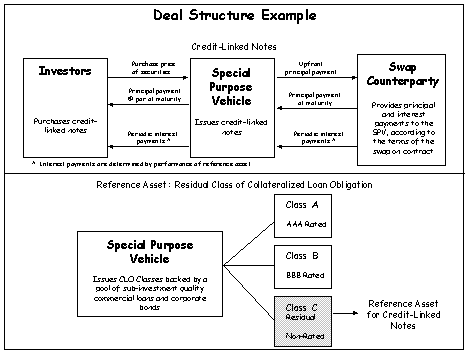Collateralized Debt Obligation (CDO) Definition
Post on: 23 Апрель, 2015 No Comment

DEFINITION of ‘Collateralized Debt Obligation — CDO’
A structured financial product that pools together cash flow-generating assets and repackages this asset pool into discrete tranches that can be sold to investors. A collateralized debt obligation (CDO) is so-called because the pooled assets – such as mortgages, bonds and loans – are essentially debt obligations that serve as collateral for the CDO. The tranches in a CDO vary substantially in their risk profile. The senior tranches are relatively safer because they have first priority on the collateral in the event of default. As a result, the senior tranches of a CDO generally have a higher credit rating and offer lower coupon rates than the junior tranches, which offer higher coupon rates to compensate for their higher default risk.
INVESTOPEDIA EXPLAINS ‘Collateralized Debt Obligation — CDO’
As many as five parties are involved in constructing CDOs:
- Securities firms, who approve the selection of collateral, structure the notes into tranches and sell them to investors;
- CDO managers, who select the collateral and often manage the CDO portfolios;
- Rating agencies, who assess the CDOs and assign them credit ratings;
- Financial guarantors, who promise to reimburse investors for any losses on the CDO tranches in exchange for premium payments; and
- Investors such as pension funds and hedge funds.
The earliest CDOs were constructed by Drexel Burnham Lambert – the home of former “junk bond king” Michael Milken – in 1987 by assembling portfolios of junk bonds issued by different companies. Securities firms subsequently launched CDOs for a number of other assets with predictable income streams, such as automobile loans, student loans, credit card receivables and even aircraft leases. However, CDOs remained a niche product until 2003-04, when the U.S. housing boom led the parties involved in CDO issuance to turn their attention to non-prime mortgage-backed securities as a new source of collateral for CDOs.
CDOs subsequently exploded in popularity, with CDO sales rising almost 10-fold from $30 billion in 2003 to $225 billion in 2006. But their subsequent implosion, triggered by the U.S. housing correction, saw CDOs become one of the worst-performing instruments in the broad market meltdown of 2007-09. The bursting of the CDO bubble inflicted losses running into hundreds of billions on some of the biggest financial institutions, resulting in them either going bankrupt or being bailed out through government intervention, and contributing to escalation of the global financial crisis during this period.














